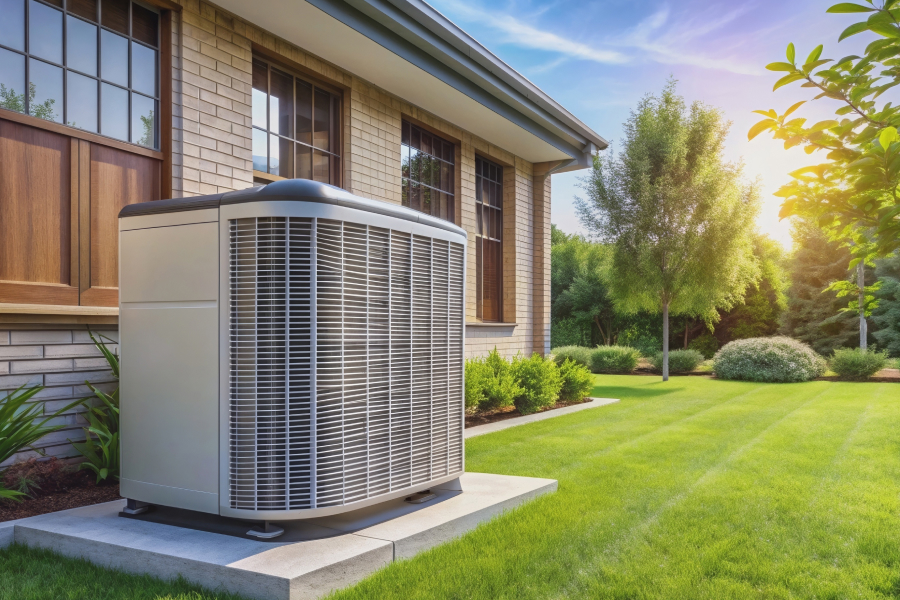Hidden Factors Shortening Asset Lifespans and Why You Need a 2026 Plan


For property managers and owners, heating and cooling systems aren’t just another line item in the budget, they’re the backbone of resident comfort and satisfaction. When these systems fail, costs spike, emergency vendors are dispatched, and residents are quick to notice the disruption.
The problem is that many portfolios are operating under outdated assumptions about how long HVAC systems last and how much they’ll cost to maintain. While industry standards often cite a 15–20 year average lifespan (ASHRAE), real-world conditions mean most units fall short of that mark. Add in refrigerant regulations and shifting climate patterns, and the picture becomes even more complex.
Now, as operators begin finalizing budgets for 2026, the question isn’t if you’ll need to account for replacements, it’s how soon and how many.
What’s Driving Premature Failures
1. Environmental Stressors
If your properties are near salt air, humidity, or harsh seasonal shifts, it’s not just discomfort you’re dealing with—it’s accelerated corrosion, reduced efficiency, and shortened equipment life. ASHRAE life expectancy charts show that under ideal conditions, many units may last 15-20 years, but in harsher conditions, that drops significantly.
2. Refrigerant Phase-Outs and Regulation
Regulatory changes are moving fast. The U.S. EPA’s Technology Transitions rules (under the AIM Act) are phasing down high-GWP refrigerants. For example, systems using R-410A face regulatory pressure: new products using high-GWP refrigerants above 700 will have restrictions on import/manufacture as of January 2025.
This means that even if your equipment still functions, repair costs will likely rise. Refrigerants will become more expensive, availability may drop, and compliance burdens increase.
3. Deferred or Inconsistent Maintenance
Many failures are not due to catastrophic breakdowns, but rather neglect: dirty coils, clogged filters, poor airflow. These lead to inefficiency, strain on components, and a cascading effect of failures. Regular maintenance can prevent or delay much of this damage.
The Budget Impact for Property Managers
Taken together, these factors aren’t theoretical; they have real financial consequences:
- Emergency vs. planned spend: Without visibility into which assets are nearing end-of-life, you may spend far more on emergency repairs, temporary solutions, and vendor premium rates.
- Resident satisfaction: Failure during peak heat or cold seasons hits hardest when residents are paying rent and expect systems to just work. Reputation & retention suffer.
- Capital planning risks: Waiting until systems fail forces reactionary capital spend—less efficient, more expensive, and often lumped into tight budgeting cycles with less accuracy.
In many portfolios, over 30% of heating/cooling units are already beyond their median life expectancy, meaning they’re costing more than they’re worth in frequent repairs and inefficiencies.
Why 2026 Is the Critical Planning Year
Because of the refrigerant regulation timelines (e.g. import/manufacture restrictions coming into effect in 2025), and because environmental stressors are intensifying, 2026 is shaping up to be a turning point.
Property managers who begin assessments and data gathering now will have the headroom to:
- Identify which systems to replace vs. maintain
- Build in compliance and refrigerant transitions
- Smooth out capital expenditures over time instead of compressing spend in crises
Use remaining budget in 2025 to inspect, tag, and quantify equipment health. That gives you leverage when asking for 2026 capital.
How Lessen Helps
Predicting HVAC failure isn’t about crystal balls—it’s about insight, data, and planning. Lessen helps you move from reaction to control.
- We start with site assessments and asset tagging, documenting unit age, condition, refrigerant type, and maintenance history.
- Then, we build preventative maintenance programs that address airflow, filter health, coil integrity, and regulatory compliance.
- We layer in remote monitoring and predictive analytics so you catch small problems before they become emergencies.
With that approach, you gain more predictable budgets, fewer huge surprise expenses, and stronger resident satisfaction. If you're ready to build a 2026 plan based on real asset health, Lessen is here to help. Let’s talk today.

- This is my list